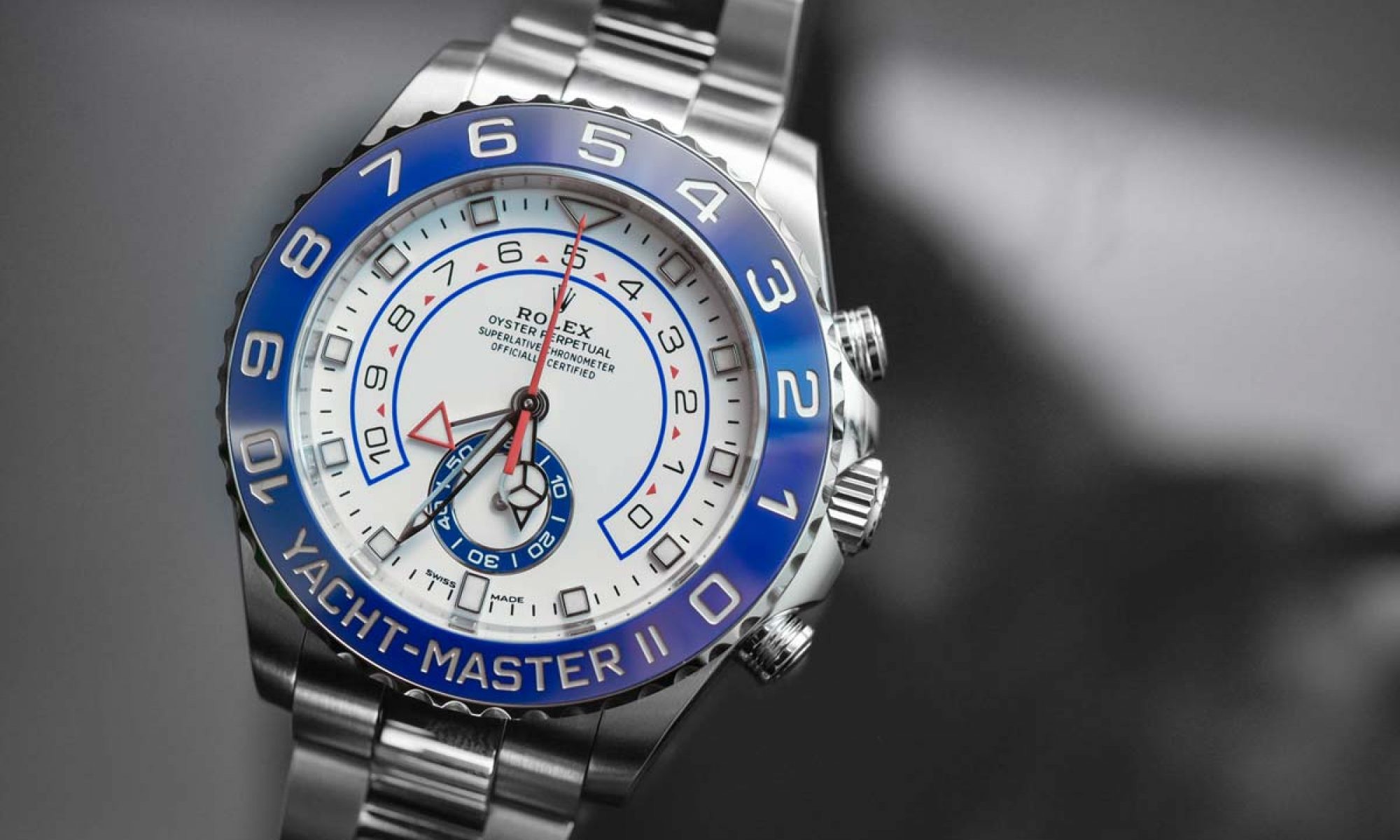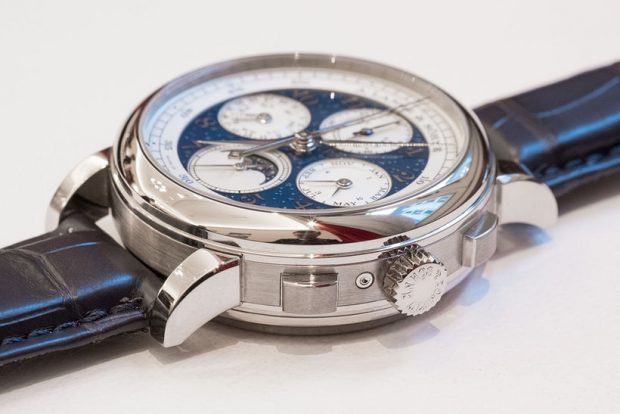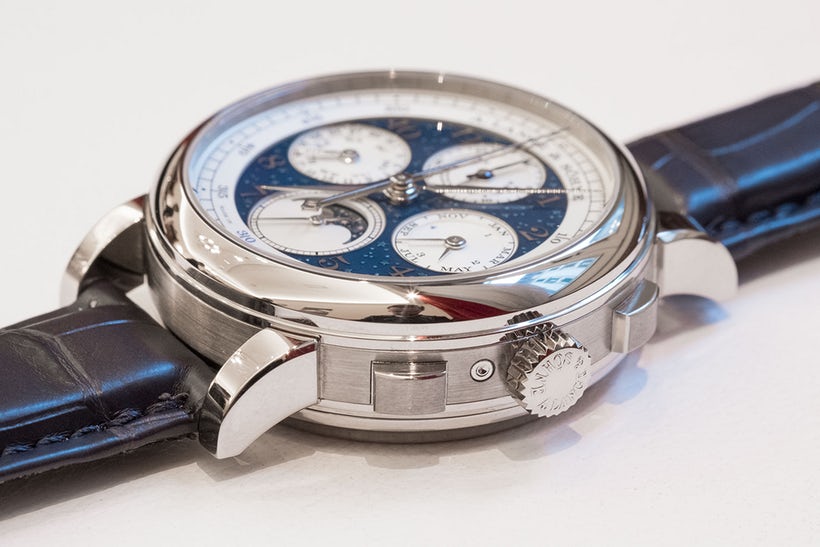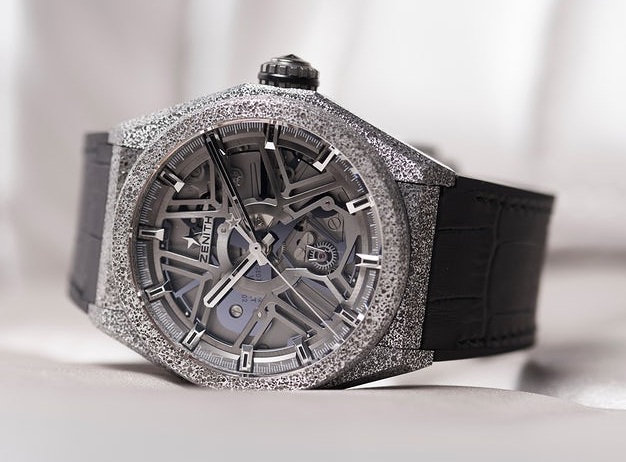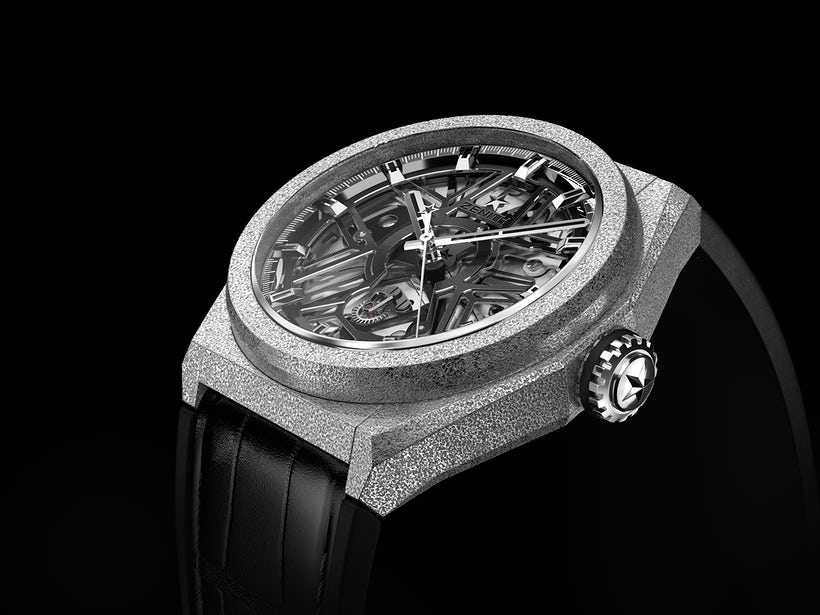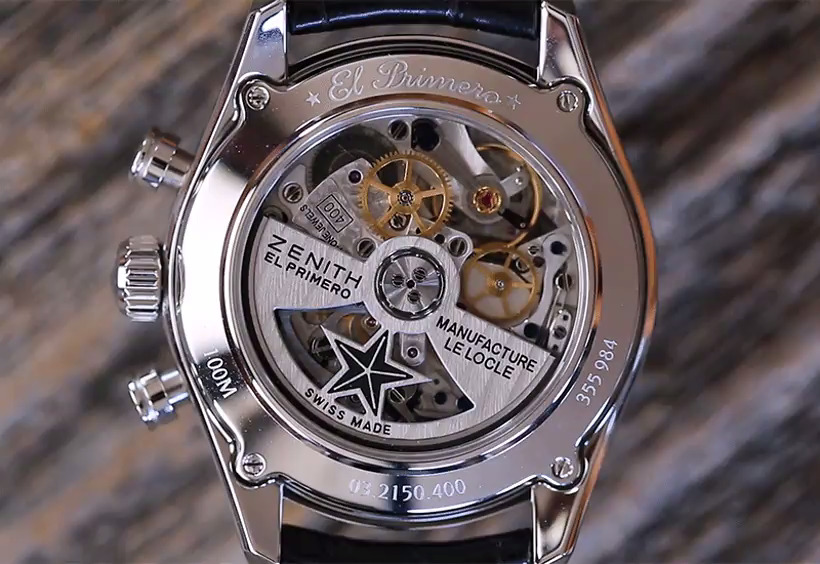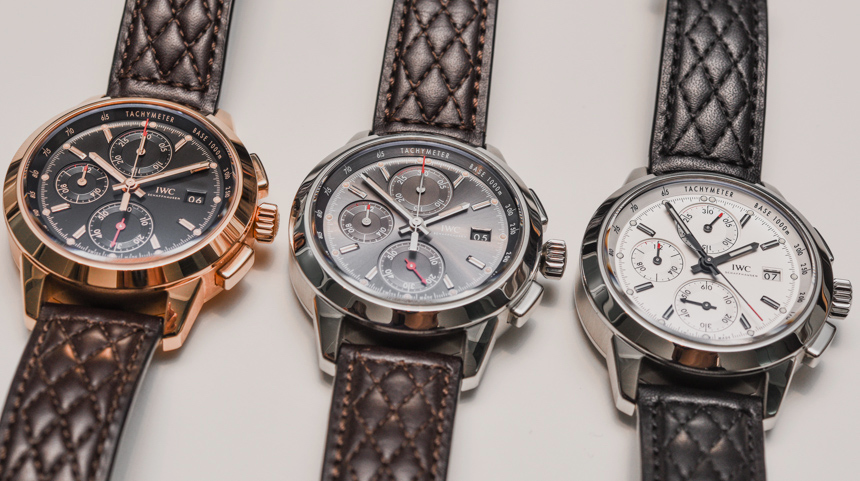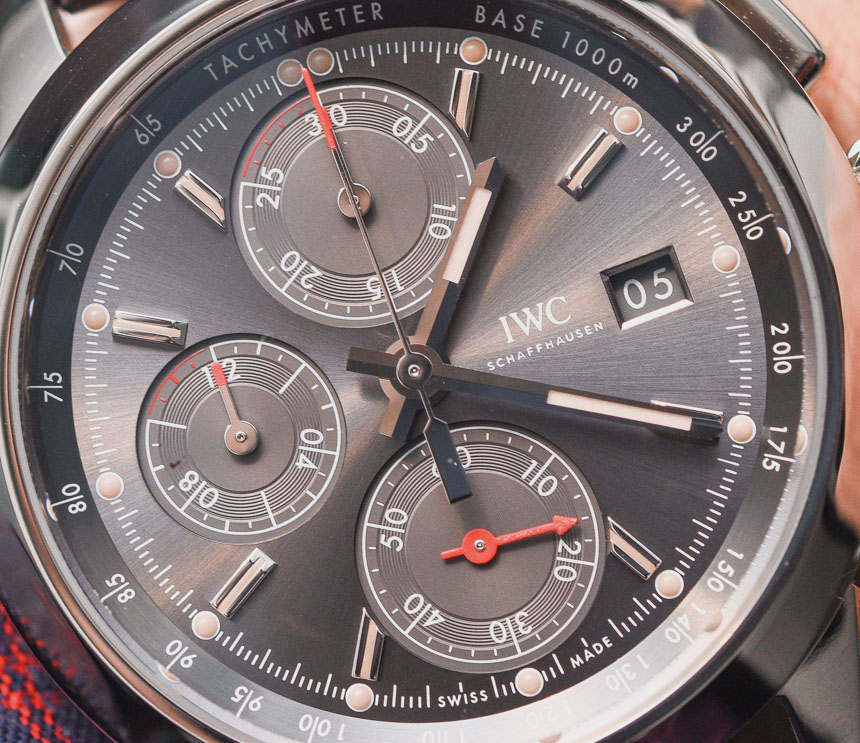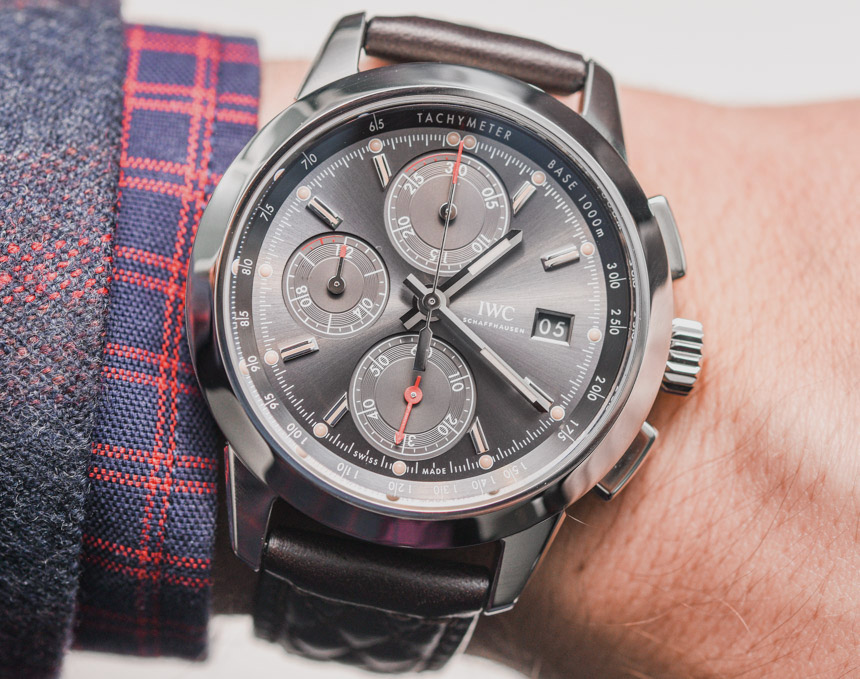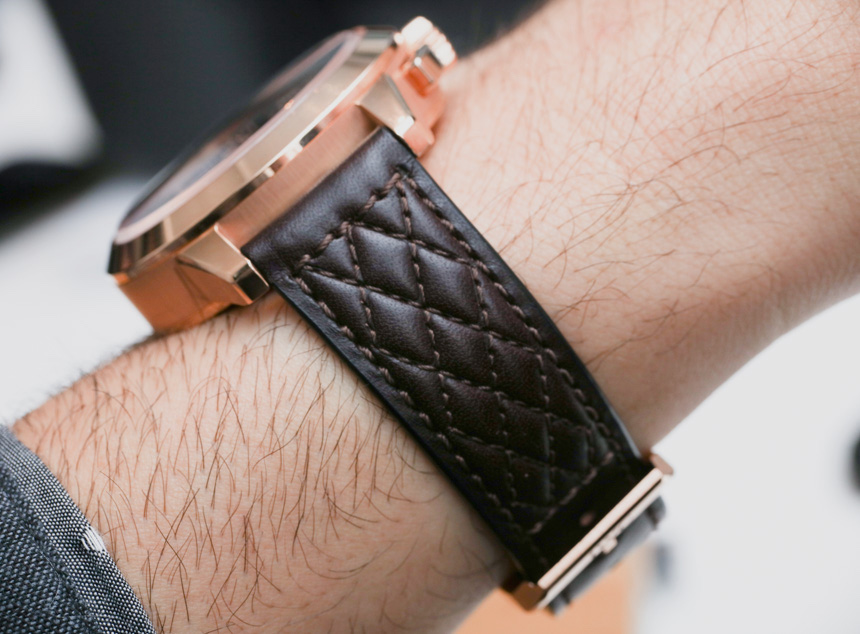It’s that time of year again – Handwerkskunst time. As the end of the calendar inches closer and closer, Lange always gives us a mega watch that focuses on showing off the ornate handwork and often-overlooked crafts that the German manufacture is keeping alive. The elegant A. Lange & Söhne 1815 copy watches are always made in small quantities, involves a mix of complications and aesthetic flourishes, and, predictably, carries a price tag to match. This year’s introduction is no exception.
In the last few years, we’ve seen the Zeitwerk, the 1815 Tourbillon, and the Lange 1 Tourbillon all get Handwerkskunst treatments. There’s been heavy use of the special tremblage engraving technique which gives that unique grained texture to the surfaces of plates, bridges, and dial, amongst other special engraving and enameling techniques. This year’s watch continues that, but with a slightly more maximalist aesthetic.
The noble A. Lange & Söhne 1815 replica watches are one serious watch, both mechanically and artistically. When I first saw it, I let out an audible “woah.” But let’s start with the basics. The 1815 Rattrapante Perpetual Calendar Handwerkskunst is 41.9mm in diameter and 15.8mm high, with a case in solid white gold. It’s a pretty substantial watch, but I’ve got to say that after seeing it in the metal I think it’s definitely still wearable for those who don’t mind larger watches.
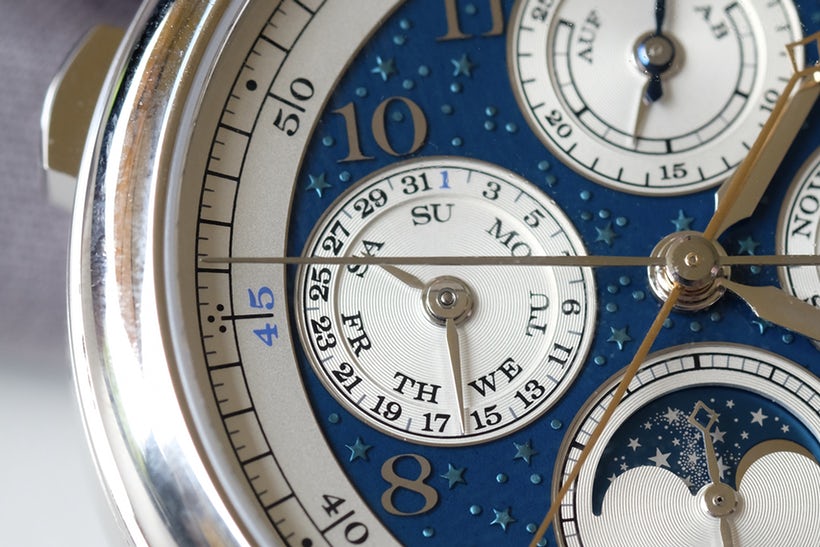
There’s a ton of functionality packed into this pieces, as you can probably guess from the name. Looking at the dial, you’ve got hour and minute hands, plus a sub-dial at six o’clock that shows the running seconds and the moonphase.
Then, there’s the split-seconds chronograph functions. The white and yellow gold central seconds hands (the latter is the split hand) are joined by a 30-minute totalizer at 12 o’clock that also contains the power reserve indicator. Finally, there’s a full perpetual calendar, with the day of the week and date at nine o’clock and the month and leap year cycle indicator at three o’clock.
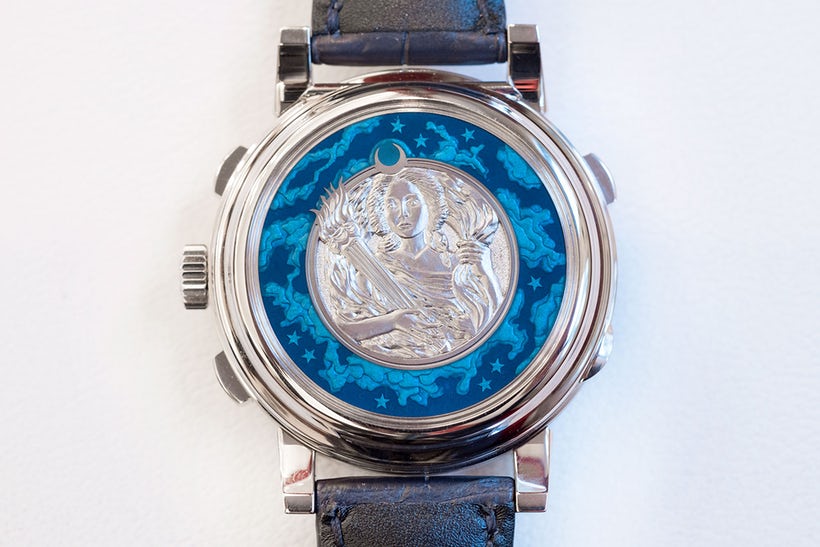
There’s not just a lot of information on the dials of A. Lange & Söhne fake watches with gold hands though – there’s a lot of decoration too. The entire thing starts with a large plate of white gold. Then a series of stars are relief engraved around the areas where the numerals and sub-dials are positions. Iridescent blue enamel is then applied over the top, so the stars seem to be floating in a dark blue sky.
The silvered, circular grained sub-dials really pop against the blue, and the Arabic numerals are flush with the surface of the enamel. In all, the dial itself is comprised of five components, and this is the first time A. Lange & Söhne has combined engraving and enameling techniques to produce a single dial.
